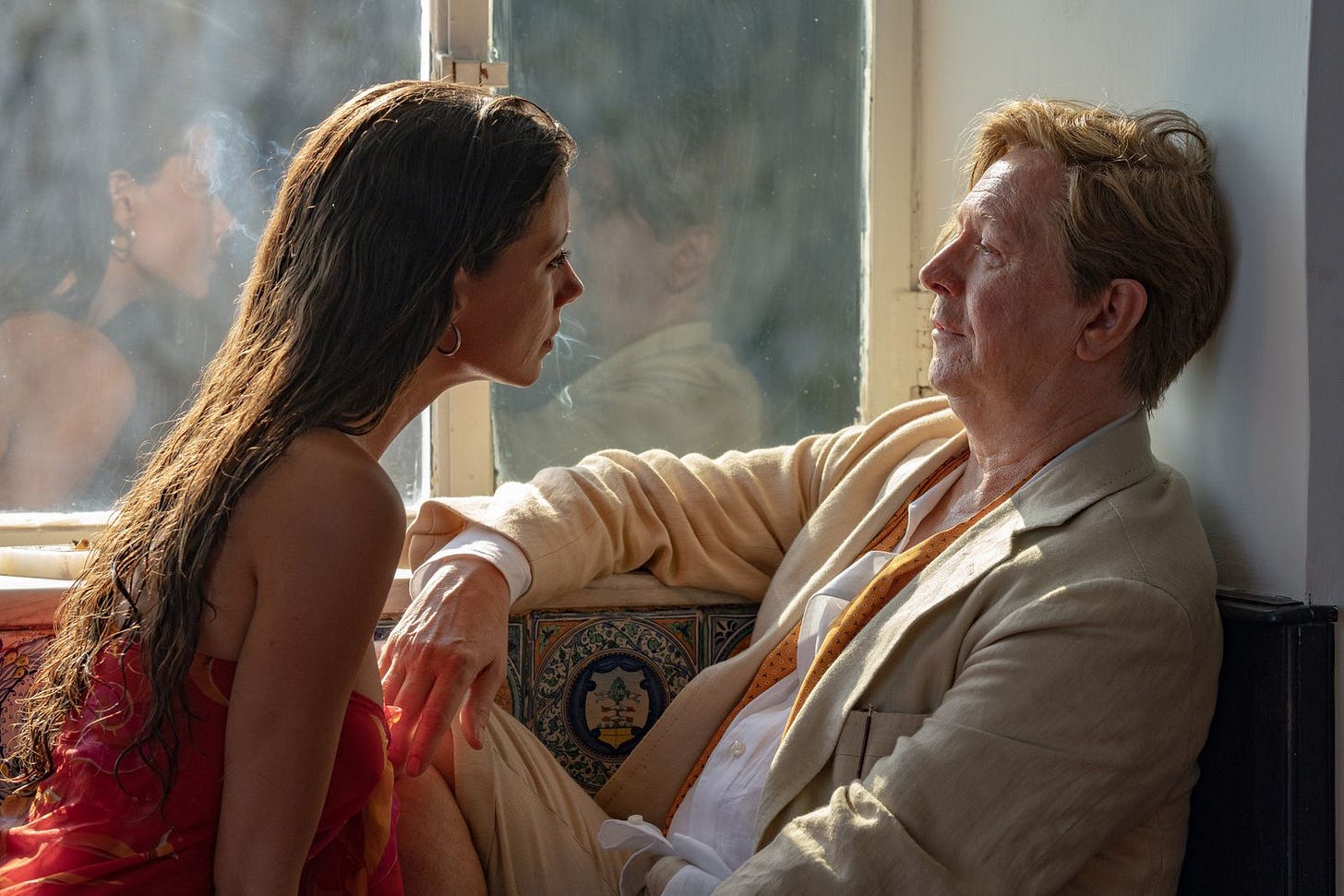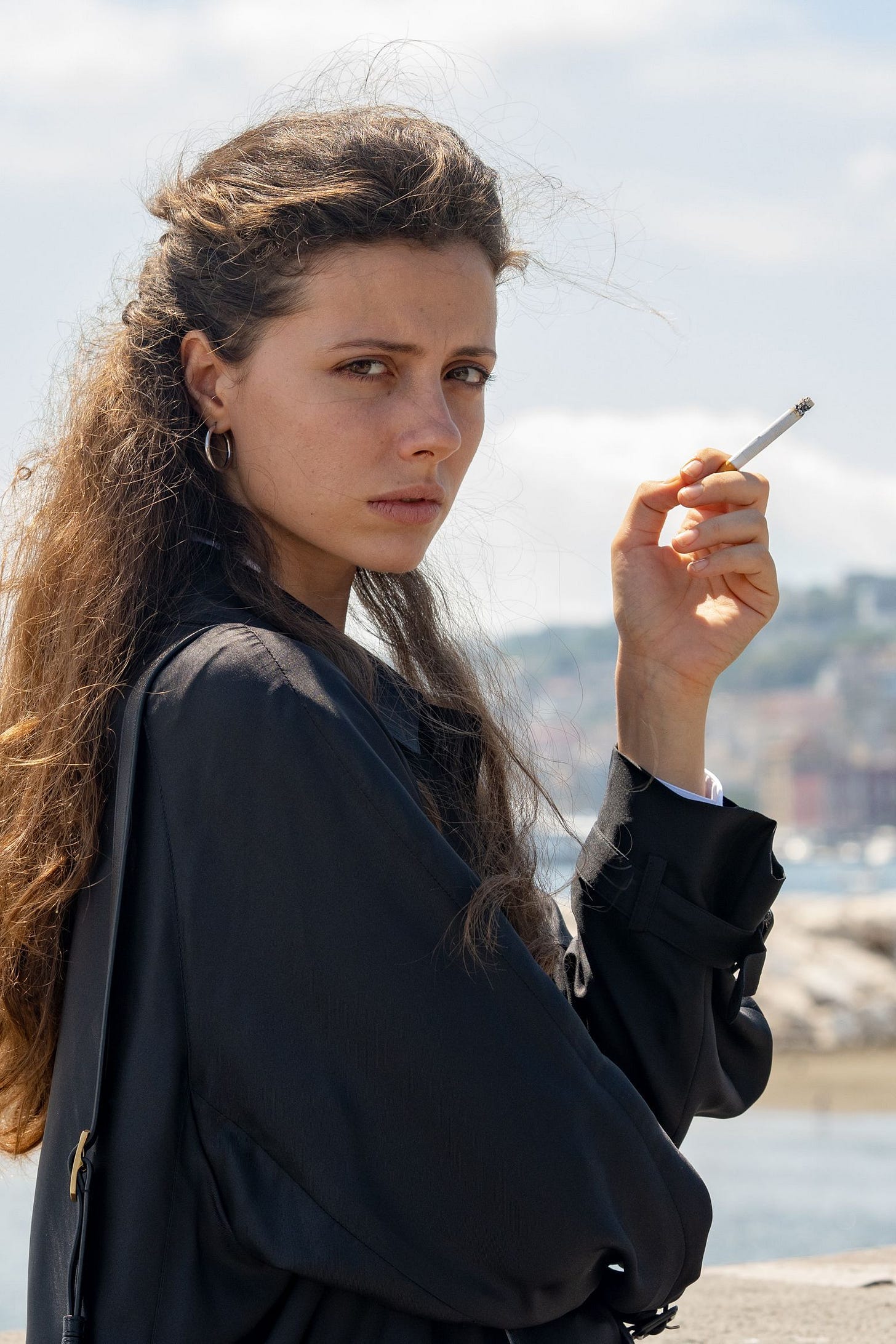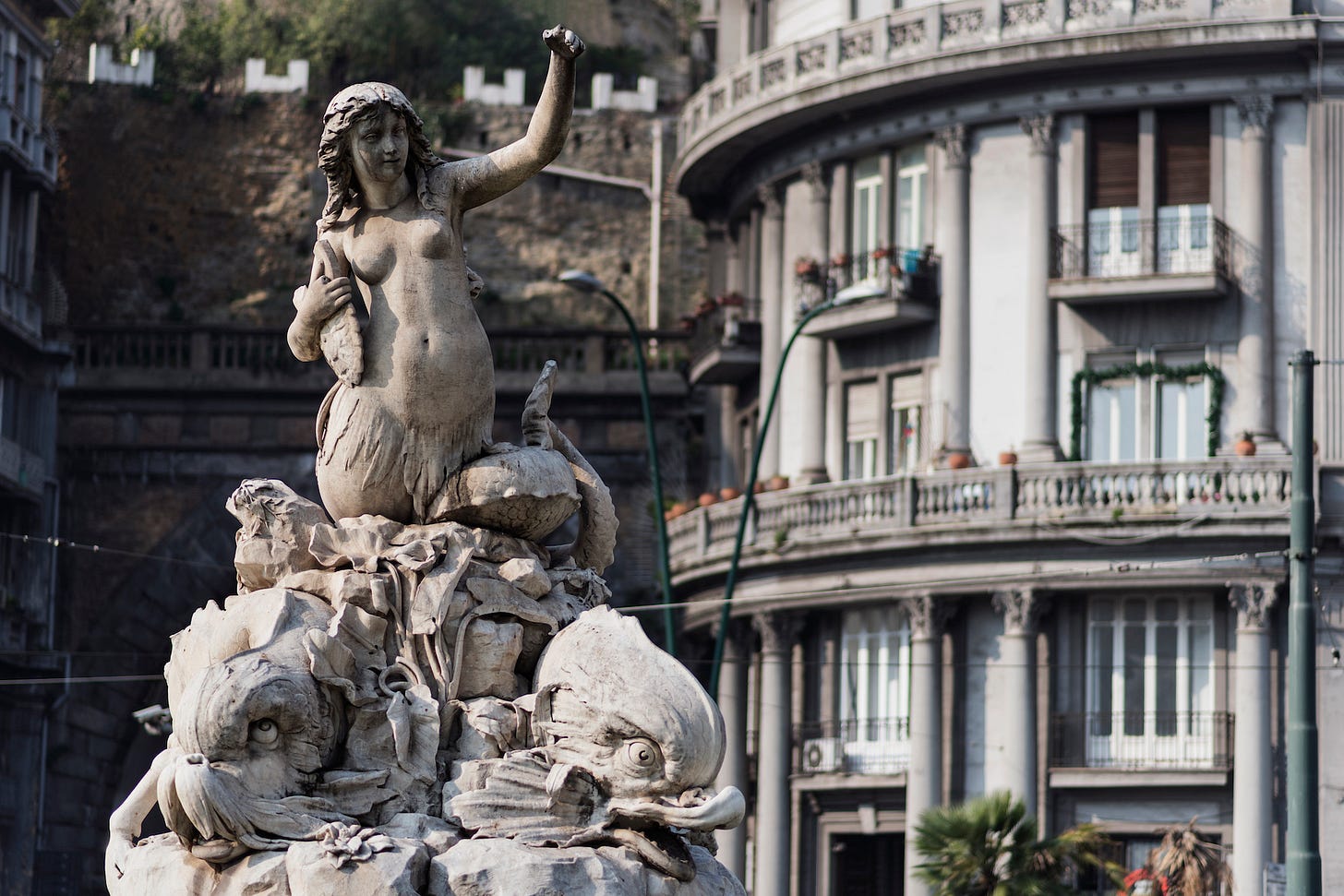The Ferrantean Undertones of Sorrentino's Parthenope
Two Neapolitan creatives craft protagonists who are both charmingly alluring yet dangerously manipulative, in the backdrop of a Naples riddled with contradictions.
‘Smarginature’ says Lila, as she watches the Solara brothers open-fire upon the Carracci’s New Years party in the first book of Elena Ferrante’s Neapolitan Novels. The social frames of the neighbourhood have spilled over, neighbour has turned enemy, a teenage girl metamorphoses trust into crippling suspicion. This single phrase smarginature - translated to ‘dissolving margins’ in English - is the canon word of all Ferrante’s work. It encompasses jarring moments of unravelling, of psychological unease, an existential state of uncertainty. It is most often an epiphany which renders reality unstable. Ferrante is in the business of moulding female protagonists who either engineer or undergo smarginature: exploring transgressive actions that are more often than not uncomfortably grotesque. Think of Lila looking upon her new husband as a disgusting, threatening, shapeless entity at her wedding reception. Stability ripped out from underneath her feet. Or Zia Vittoria in La Vita Bugiarda Degli Adulti, who graphically describes her sexual experiences to a bewildered thirteen-year-old Giovanna whilst the pair stand in the middle of a cemetery. Giovanna self-understanding begins to melt away; it is Vittoria who muddles this teenage girl’s transformation into a blurry chain of strange experiences. If she is so similar to her aunt, then she must behave with the same daring brashness - even if this brashness is foreign to her intuition. It was these concepts and these women which I had in mind yesterday watching Paolo Sorrentino’s newest release Parthenope. A bildungsroman set against a seductively aesthetic 1970s Naples, a woman named after the siren of her city experiments with how far her beauty can go - how it can torture and manipulate those around her.
Parthenope, played by Celeste Dalla Porta, is revered for her beauty. Sorrentino is himself a sensualist when it comes to cinema. Whilst in his previous film a strikingly beautiful woman was the backdrop of an awkward teenager’s coming of age (Patrizia in La Mano di Dio played by Luisa Ranieri), Parthenope is the film’s entire focus. She is born in the sea and named for the siren who, in Greek mythology, founded the city of Naples. She lethargically lies upon the rocks of a Southern Italian bay, crystalline waters sparkle, as the pastel Vomero and ubiquitous Vesuvius revolves around this mystical and other-worldly heroine.
The Daily Telegraph has dubbed Parthenope ‘an utterly vacuous love letter to Naples.’ Naples, as in Ferrante’s novels, is a character in and of itself. In Parthenope the protagonist and her city are interwoven and inextricably fused. If Parthenope is vacuous and languid, lacking direction and consumed by the power her image possesses, Naples mimics this. The further Parthenope goes in testing the limits of her beauty, the more dangerous she becomes and, in turn, the beauty of Naples deteriorates.
Upon meeting a charming and much older author in Capri, John Cheever (played by Gary Oldman) is unsurprisingly knocked over by Parthenope’s beauty - though he’s also a listless drunk who refuses to steal another moment of her youth. She carries on wasting it though, entertaining a whim of acting and discovering the miserable repercussions of crafting herself into Italy’s next ‘diva’. Parthenope spirals out of control and Naples follows suit: we find our protagonist in the city’s shadiest vicoli, surrounded by gaunt faces and seedy superstition and the most arbitrary intercourse with the priest of San Gennaro. Smarginature ensues when Parthenope loses herself and sinks deep into the city’s treacherous mires.
Smarginature does not just manifest itself in Parthenope as an individual but also crops up in her relationships. We see from the film’s beginning an ambiguous, incest leaning relationship with her brother Raimondo and a Sphinx-like manner of speaking to her elders. She is called ‘la furbacchiona’ (the sly/cheeky one) by the Commandante, and told that she has an ‘answer for everything’ by a man she toys with one evening in Capri. She is remarkably akin to Lila Cerullo in this sense, sly and ambiguous - projecting the illusion of being all-knowing yet deep down a mere observer, a humanist - seeking to experiment with people and their desires, pushing them to the limit, blurring the boundary between self and world. She is an anthropologist, after all.
Sorrentino’s characters thrive on ambiguity. Love for Parthenope is a waiting game, keeping men on edge before abandoning them . As she remarks to a hotelier, ‘questo è il gioco. Non si sa’ (‘That’s the game. You’ll never know'). She says ‘desire is a mystery, and sex is its funeral’. Every encounter with a man is fraught with detachment and enigma. This is the same for Elena Greco in the first Neapolitan novel; she sleeps with Antonio for the sole purpose of telling Lila ‘anche io non sono più vergine’ (even I am not a virgin anymore) and consents to the predatory Donato Sarratore for a desire of making herself go further and lose herself - both suspended states generated by Lila; Elena lags behind and yearns to catch up. This process blurs her mind and reason, she is left a shadow of her childhood friend rather than a woman in her own right.
What is the cultural question behind Sorrentino and Ferrante’s obsession behind dissolving margins? How is it so quintessentially Neapolitan? In Ferrante’s essay collection In The Margins she writes that Naples cannot be written about without its dialect - yet upon the pages Neapolitan culture is rendered sterile. ‘It loses passion, loses affect, loses the sense of danger it often communicated to me.’ Naples upon the page is uncontainable. Whilst there are a few Neapolitan outbursts in Parthenope, the Naples that cannot be restrained for Sorrentino is its intoxicating beauty. ‘Beauty is like war. It opens doors’, John tells Parthenope. The doors of Naples have split wide open, allowing beauty to stir so much until it gradually morphs into pain. The diva and Parthenope’s muse, Greta Cool (Luisa Raniere), denounces her Neapolitan audience: ‘camminate a braccetto con l’orrore e non lo sapete’ (you all walk arm in arm with horror and you don’t realise.) Beauty is but a thin veil draped over ubiquitous ugliness, the emptiness in Parthenope which she never fulfils in her youth. The beauty is the sea. The farther one journeys from it, the more smarginature ensues.
This is reminiscent of Elena and Lila’s childhood journey to the sea from their dingy neighbourhood on the foothills of Vesuvius: it starts to rain, they never make it. They turn back and continue to be sucked into the vortex of misogyny and superstition. Parthenope, who carries the mysticism of her mermaid namesake, takes the opposite journey, descending from the sea and into chaos. It is a voluntary journey. She thrives of mystery and enigma. This is a common trait in all Neapolitans, says Anna Maria Ortese in Il Mare Non Bagna Napoli. In the story Un paio di occhiali, young Eugenia desperately needs glasses though her family cannot afford them. When they finally take her to the optician, in the hope that she will finally see the beauty and colours of the world, she is left disillusioned. She sees with painful starkness the squalor of her surroundings and her decaying city. Clear sight is a cruel burden.
Thus, Parthenope disassociates herself from reality. A true Neapolitan, she prefers to revel in reality as if it is a dream. The city laced with complexity and contradictions can only produce characters who mirror these extremes. ‘Il mare come spaesamento’ (Ortese), the sea as disorientation, is but momentary relief from a grotesque haze which awaits anyone courageous enough to understand what lies behind such a potent and ephemeral spectacle.








Ever since I watched Parthenope, I haven't stopped thinking about Elena Ferrante and how the two stories are so intertwined. Although I know Elena Greco isn't a real person, I was still shocked to see the name listed in the credits of Parthenope. Beautiful piece!
So brilliant Sophie! ❤️🔥